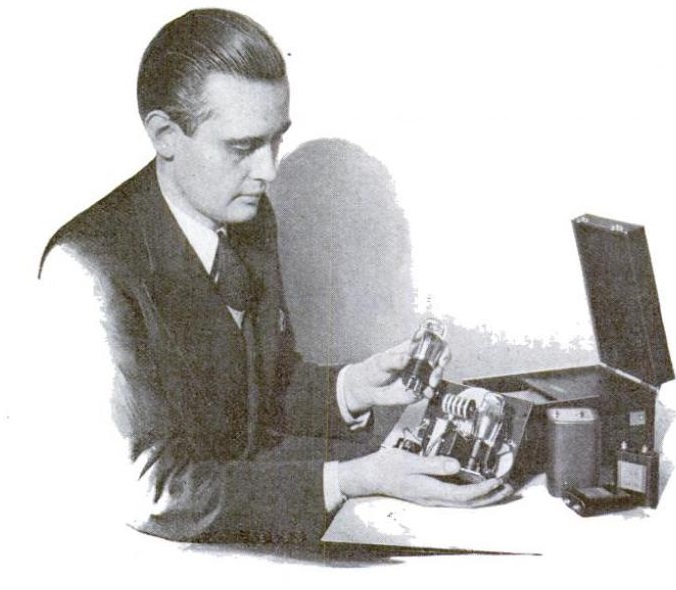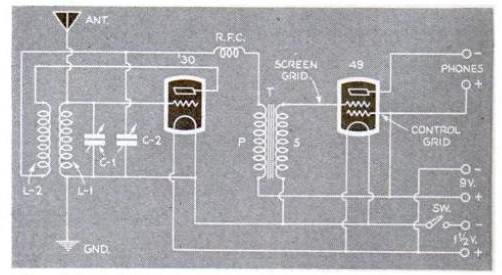
 Eighty-five years ago, this gentleman was showing off the two-tube broadcast receiver that he constructed according to the plans shown in the July 1936 issue of Popular Science. The set’s main claim to fame was that it didn’t require expensive and heavy B batteries. The two-tube regenerative set ran off of just nine volts on the plates, plus an additional 1.5 volt battery to light the filaments of the type 30 and type 40 tube.
Eighty-five years ago, this gentleman was showing off the two-tube broadcast receiver that he constructed according to the plans shown in the July 1936 issue of Popular Science. The set’s main claim to fame was that it didn’t require expensive and heavy B batteries. The two-tube regenerative set ran off of just nine volts on the plates, plus an additional 1.5 volt battery to light the filaments of the type 30 and type 40 tube.
The simple circuit required only nine commercial parts–a transformer, an RF choke, two variable condensers, the tubes and sockets, and a switch. The “pancake” coils were easily wound at home.
The article noted that the layout of the circuit was quite critical, but over the course of a few months, the author pulled in more than 50 stations as far as 1500 miles away, with just a 12 foot indoor antenna and no ground.

